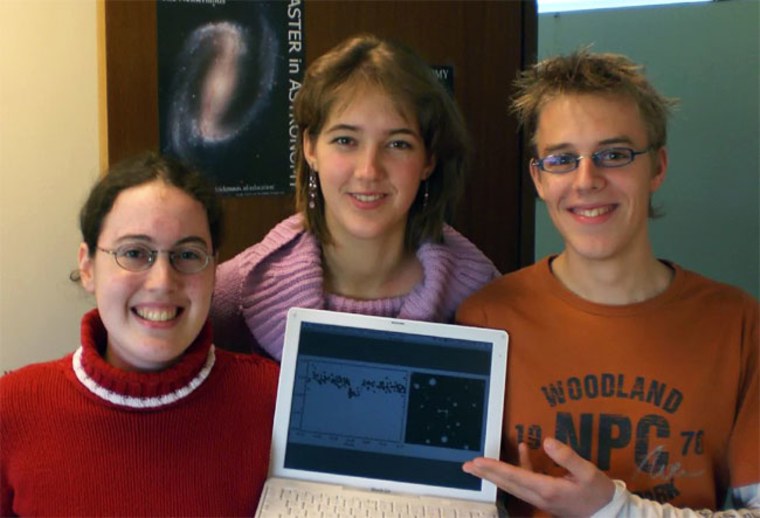Three undergraduate students have discovered a large planet orbiting a fast-rotating star. Extrasolar planet discoveries like this have become common, but this one is unusual both for who found it and the type of star it orbits.
"It is exciting not just to find a planet, but to find one as unusual as this one; it turns out to be the first planet discovered around a fast-rotating star, and it's also the hottest star found with a planet," said one of the planet's discoverers, Meta de Hoon of Leiden University in The Netherlands.
The other Leiden-student team members included Remco van der Burg and Francis Vuijsje.
The planet, which is about five times as massive as Jupiter, circles its host star every 2.5 days. It lies at only three percent of the Earth-sun distance from its star, making it very hot and much larger than many other planets.
The host star is about 12,000 degrees Fahrenheit (6,700 degrees Celsius). For comparison, the part of the sun we see reaches temperatures of 10,000 degrees F (5,500 degrees C). The planet is officially tagged as OGLE2-TR-L9b. "But amongst ourselves we call it ReMeFra-1, after Remco, Meta, and myself," Vuijsje said.
The students detected the exoplanet while testing a method for investigating light fluctuations of thousands of stars in the OGLE database in an automated way.
The planet has not been seen directly. But the brightness of one of the stars decreased for two hours every 2.5 days by about one percent, suggesting a planet was transiting in front of the star as seen from an earthly point of view. Follow-up observations with ESO's Very Large Telescope in Chile confirmed that the dip in light was caused by a planet passing in front of the star, blocking part of the starlight at regular intervals.
"This is the first planet found around a fast-rotating star, because it is very difficult to confirm planets around these objects," the project supervisor Ignas Snellen of Leiden told SPACE.com.
He added, "So there must be many planets orbiting fast-spinning stars, but they are just difficult to find. This is because the fast spin makes it difficult to measure the stellar 'wobble' needed to determine the mass of the object orbiting it, and confirming it to be a planet."
Most of the 300-plus exoplanets identified to date were detected by the so-called radial velocity method, in which astronomers look for a star's wobble produced by the gravitational tug of an orbiting planet. But the transit method of detection is gaining steam. And recently, the first actual photos of planets around other stars were made.
The discovery will be detailed in a forthcoming issue of the journal Astronomy and Astrophysics.
